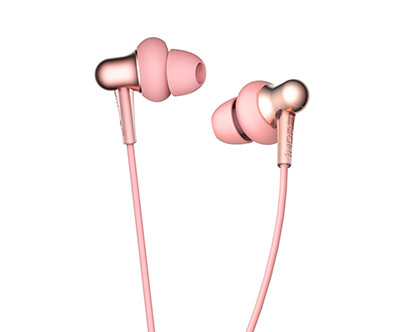 Afrikaans
Afrikaans  Albanian
Albanian  Amharic
Amharic  Arabic
Arabic  Armenian
Armenian  Azerbaijani
Azerbaijani  Basque
Basque  Belarusian
Belarusian  Bengali
Bengali  Bosnian
Bosnian  Bulgarian
Bulgarian  Catalan
Catalan  Cebuano
Cebuano  Corsican
Corsican  Croatian
Croatian  Czech
Czech  Danish
Danish  Dutch
Dutch  English
English  Esperanto
Esperanto  Estonian
Estonian  Finnish
Finnish  French
French  Frisian
Frisian  Galician
Galician  Georgian
Georgian  German
German  Greek
Greek  Gujarati
Gujarati  Haitian Creole
Haitian Creole  hausa
hausa  hawaiian
hawaiian  Hebrew
Hebrew  Hindi
Hindi  Miao
Miao  Hungarian
Hungarian  Icelandic
Icelandic  igbo
igbo  Indonesian
Indonesian  irish
irish  Italian
Italian  Japanese
Japanese  Javanese
Javanese  Kannada
Kannada  kazakh
kazakh  Khmer
Khmer  Rwandese
Rwandese  Korean
Korean  Kurdish
Kurdish  Kyrgyz
Kyrgyz  Lao
Lao  Latin
Latin  Latvian
Latvian  Lithuanian
Lithuanian  Luxembourgish
Luxembourgish  Macedonian
Macedonian  Malgashi
Malgashi  Malay
Malay  Malayalam
Malayalam  Maltese
Maltese  Maori
Maori  Marathi
Marathi  Mongolian
Mongolian  Myanmar
Myanmar  Nepali
Nepali  Norwegian
Norwegian  Norwegian
Norwegian  Occitan
Occitan  Pashto
Pashto  Persian
Persian  Polish
Polish  Portuguese
Portuguese  Punjabi
Punjabi  Romanian
Romanian  Russian
Russian  Samoan
Samoan  Scottish Gaelic
Scottish Gaelic  Serbian
Serbian  Sesotho
Sesotho  Shona
Shona  Sindhi
Sindhi  Sinhala
Sinhala  Slovak
Slovak  Slovenian
Slovenian  Somali
Somali  Spanish
Spanish  Sundanese
Sundanese  Swahili
Swahili  Swedish
Swedish  Tagalog
Tagalog  Tajik
Tajik  Tamil
Tamil  Tatar
Tatar  Telugu
Telugu  Thai
Thai  Turkish
Turkish  Turkmen
Turkmen  Ukrainian
Ukrainian  Urdu
Urdu  Uighur
Uighur  Uzbek
Uzbek  Vietnamese
Vietnamese  Welsh
Welsh  Bantu
Bantu  Yiddish
Yiddish  Yoruba
Yoruba  Zulu
Zulu Innovative Approaches to Designing Belt Conveyor Idlers for Enhanced Efficiency and Durability
Belt Conveyor Idler Design An Overview
Belt conveyors play a crucial role in various industrial applications, facilitating the efficient transportation of materials over both short and long distances. A key component in the functionality of a belt conveyor is the idler system. Idlers are the rollers that provide support to the conveyor belt and the bulk materials being transported. The design of belt conveyor idlers is vital to ensuring that the conveyor operates smoothly, minimizes maintenance costs, and enhances overall efficiency.
Understanding Idlers
Idlers are typically mounted on frames and spaced strategically along the conveyor's length. They are designed to support the conveyor belt and maintain its alignment, allowing it to carry materials without sagging or overloading. The common types of idlers include troughing idlers, carrying idlers, return idlers, and impact idlers. Each type serves a specific purpose, fulfilling the varied requirements of different materials and operational conditions.
Key Design Considerations
1. Load Capacity One of the foremost considerations in idler design is its load-bearing capacity. The idler must be capable of supporting not only the weight of the belt but also the load of the materials being transported. This involves selecting the right materials for the idler construction, typically steel or durable plastic, and ensuring that the design can withstand the stresses of the operational environment.
2. Roller Diameter and Spacing The diameter of the rollers and their spacing significantly affect the conveyor’s performance. Larger diameter rollers reduce the rolling resistance and are better suited for heavy loads, while smaller rollers can be utilized for lighter materials. The spacing of the idlers must be carefully calculated to prevent excessive sagging of the belt, which can lead to material spillage and increased wear.
3. Material and Coating The choice of materials and surface treatment is crucial for idler longevity. Rollers are often coated with protective materials to enhance corrosion resistance and reduce wear from abrasion. Moreover, idlers should be designed to minimize dust and material buildup, which could affect their operational efficiency.
belt conveyor idler design

4. Alignment and Stability For optimal performance, idlers must maintain the proper alignment of the belt. Misalignment can lead to increased friction, premature wear, and operational disruptions. Features such as rubber discs on the idler roller can help keep the belt centered and aligned during the material transport process.
5. Maintenance and Accessibility The design should also facilitate easy maintenance and replacement. Incorporating features such as quick-release mechanisms can help technicians perform interventions without significant downtime.
Advanced Design Techniques
With the advent of technology, computer-aided design (CAD) and simulation software have enhanced the design process for belt conveyor idlers. These tools allow engineers to simulate various operational conditions, analyze load distributions, and optimize the idler design accordingly. Implementing finite element analysis (FEA) helps in identifying potential stress points in the idlers, thus enabling more robust designs that can withstand challenging operational environments.
Moreover, advancements in materials science, such as the development of lighter and stronger composite materials, offer new possibilities for idler construction. These materials can significantly reduce the weight of the idlers while enhancing their strength and durability.
Conclusion
In summary, the design of belt conveyor idlers is a complex but critical task that demands careful consideration of multiple factors, including load capacity, roller size, material selection, and maintenance ease. By leveraging innovative design techniques and advanced materials, engineers can create idlers that improve the efficiency and longevity of belt conveyors across various industries. As industries continue to evolve, so too will the technology and design principles behind conveyor idlers, ultimately leading to even more efficient material handling solutions.
-
Revolutionizing Conveyor Reliability with Advanced Rubber Lagging PulleysNewsJul.22,2025
-
Powering Precision and Durability with Expert Manufacturers of Conveyor ComponentsNewsJul.22,2025
-
Optimizing Conveyor Systems with Advanced Conveyor AccessoriesNewsJul.22,2025
-
Maximize Conveyor Efficiency with Quality Conveyor Idler PulleysNewsJul.22,2025
-
Future-Proof Your Conveyor System with High-Performance Polyurethane RollerNewsJul.22,2025
-
Driving Efficiency Forward with Quality Idlers and RollersNewsJul.22,2025





























